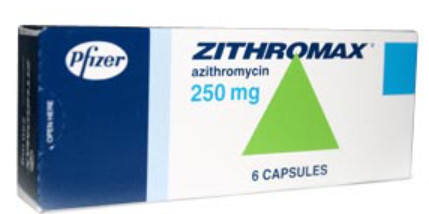
Introduction
Azithromycin is one of macrolide antibiotics which has bacteriostatic action through inhibiting bacterial protein synthesis. It is active on both gram positive and gram negative bacteria. Azithromycin also has anti-inflammatory actions. Here, we are going to shed the light on the indications of azithromycin in dermatology and what is the dosage of each indication.
Indications of azithromycin in dermatology
- Moderate-to-severe inflammatory acne (2nd line).
- Rosacea.
- Donovanosis.
- Perioral dermatitis.
- Pityriasis rosea.
- Pityriasis lichenoides et varioliformis acuta (pleva).
- Pityriasis lichenoides chronica (plc).
- Chemoprophylaxis against meningococcal disease.
- Chancroid.
- Nongonococcal urethritis.
- Primary and secondary syphilis(nonpregnant, penicillin-allergic patients).
- Uncomplicated chlamydial infections.
- Cat-scratch disease.
- Infections associated with animal and human bites.
- Yaws.
- Scrub typhus ( pregnant women and potentially children).
Dosage
- Acne vulgaris : 5–10 mg/kg thrice weekly.
- Rosacea : 250–500 mg (5–10 mg/kg) thrice weekly for 4–8 weeks.
- Perioral dermatitis : 500 mg once daily for 3 consecutive days weekly for 4–8 weeks.
- Pityriasis lichenoides chronica : 500 mg on day 1 and 250 mg on days 2 through 5, taken on the first and third weeks of the month.
- Chemoprophylaxis Against Meningococcal Disease : 500 mg Single dose, oral in adults.
- Chancroid :1 gm orally in a single dose.
- Granuloma Inguinale (Donovanosis) : gm orally once per week for at least 3 weeks and until all lesions have completely healed.
- Primary And Secondary Syphilis (Nonpregnant, Penicillin-Allergic Patients): a single 2-gm oral dose (treatment failures have been documented).
- Uncomplicated Chlamydial Infections : a single 1- g dose.
- Nongonococcal Urethritis :1 gm orally in a single dose.
- Cervicitis : 1 gm orally in a single dose.
- Localized Gonococcal Infections : a single 2- g oral dose.
- Cat-Scratch Disease :
- Patients weighing more than 45.5 kg >> 500 mg orally on day 1, followed by 250 mg once daily for 4 additional days.
- Those weighing less than 45.5 kg >> 10 mg/kg orally on day 1, followed by 5 mg/kg on days 2 to 5.
- Yaws: 30mg /kg, maximum 2g.
- Scrub Typhus (pregnant women and potentially children) :
- Adult : 500 mg po daily for 3 days.
- Pediatric : 10 mg/kg po daily.
Side effects
- Diarrhea Or Loose Stools.
- Nausea.
- Abdominal Pain.
- Stomach Upset.
- Vomiting.
- Constipation.
- Dizziness.
- Tiredness.
- Headache.
- Vaginal Itching Or Discharge.
- Nervousness.
- Sleep Problems (Insomnia).
- Skin Rash Or Itching.
- Decreased Sense Of Taste Or Smell.
- Irreversible Deafness.
- Angioedema.
- Photosensitivity.
- Hypersensitivity Syndrome.
- Cholestatic Hepatitis.
Contraindications
- Hypersensitivity to drug/class.
- Impaired liver function.
- Coadministration with pimozide.
- Terfenadine use.
Interactions
- Reports of toxicity related to co-administration of azithromycin and lovastatin, warfarin, cyclosporine, disopyramide, and theophylline.
- Decreased efficacy of azithromycin : antacids.
- Increased levels of: digoxin.
- Decreased efficacy of: oral contraceptives.
Pregnancy &Lactation
- Category B.
- Macrolides are excreted into breast milk, and therefore infant exposure to these drugs during lactation has been reported to increase the risk of hypertrophic pyloric stenosis.
Precautions
- Use with caution in abnormal liver function, hepatitis, cholestatic jaundice, hepatic necrosis, and hepatic failure have been reported, some of which have resulted in death; discontinue azithromycin immediately if signs and symptoms of hepatitis occur.
- Injection-site reactions can occur with IV route.
- In treatment of gonorrhea or syphilis, perform susceptibility culture tests before initiating azithromycin therapy; may mask or delay symptoms of incubating gonorrhea or syphilis.
- Bacterial or fungal superinfection may result from prolonged use.
- Prolonged QT interval: Cases of torsades de pointes have been reported during postmarketing surveillance; use with caution in patients with known QT prolongation, history of torsades de pointes, congenital long QT syndrome, bradyarrhythmias, or uncompensated heart failure; also use with caution if coadministering with drugs that prolong QT interval or proarrhythmic conditions (eg, hypokalemia, hypomagnesemia); elderly patients may be more susceptible to drug-associated effects on QT interval.
- Cases of Drug Reaction with Eosinophilia and Systemic Symptoms (DRESS) reported; physicians should be aware that allergic symptoms may reappear when symptomatic therapy discontinued.
- Use caution in renal impairment (CrCl <10 mL/min).
- Use with caution in patients with myasthenia gravis (exacerbation may occur).
- Immediate release and extended release suspensions are not interchangeable.
- Use extended release suspension only for treatment of infections that are proven or strongly suspected to be caused by susceptible bacteria.
- Clostridium difficile associated diarrhea (CDAD) reported and may range in severity from mild diarrhea to fatal colitis.
- Serious allergic reactions, including angioedema, anaphylaxis, and dermatologic reactions including acute generalized exanthematous pustulosis (AGEP), Stevens-Johnson Syndrome, and toxic epidermal reported ; if allergic reaction occurs, drug should be discontinued and appropriate therapy instituted.
- If vomiting or irritability with feeding occurs in neonate >> consider hypertrophic pyloric stenosis.
Drug Info
- Azithromycin does not signifcantly affect CYP isoenzymes, and so may be safely co-administered with other drugs.
- When a macrolide is required in a patient who is receiving systemic tacrolimus, azithromycin should be used (rather than erythromycin or
clarithromycin) because this does not produce signifcant inhibition of CYP3A4.
Refernces
Pulse-therapy with azithromycin in acne rosacea and perioral dermatitis: An open study.
Macrolide Therapy in Chronic Inflammatory Diseases
Was this helpful?
0 / 0
#Azithromycin #Azithromycin in dermatology